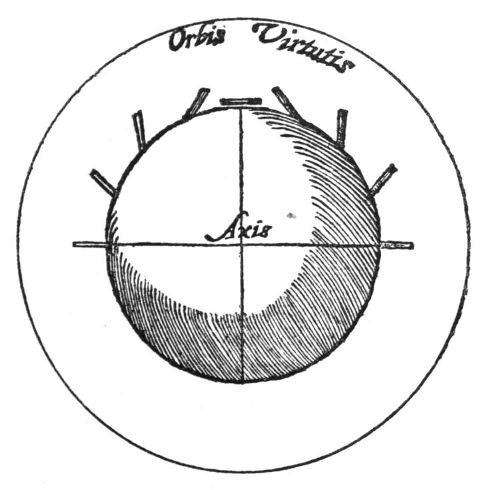how magnetick pieces of iron and smaller loadstones conform themselves to a terrella & to the earth itself, and by them are disposed.
c oition of those bodies which are divided, and do not naturally cohære, if they are free, occurs through another kind of motion. a terrella sends out in an orbe its powers in proportion to its vigour and quality. but when iron or any other magnetick of convenient magnitude comes within its orbe of virtue, it is allured; but the nearer it comes to the body, the more quickly it runs up to it. they move towards the magnet, not as to a centre, nor towards its centre. for they only do this in the case of the poles themselves, when namely that which is being allured, and the pole of the loadstone, and its centre, are in the same straight line. but in the intervening spaces they tend obliquely, just as is evident in the following figure, in which it is shown how the influence is extended to the adjoining magneticks within the orbe; in the case of the poles straight out.

the nearer the parts are to the æquinoctial, the more obliquely are magneticals allured; but the parts nearer the poles appeal more directly, at the poles quite straight. the principle of the turning of all loadstones, of those which are round and those which are long, is the same, but in the case of the long ones the experiment is easier. for in whatever form they are the verticity exists, and there are poles; but on account of bad and unequal form, they are often hindered by certain evils. if the stone were long, the vertex is at the ends, not on the sides; it allures more strongly at the vertex. for the parts bring together stronger forces to the pole in right lines than oblique. so the stone and the earth conform their magnetick motions by their nature.